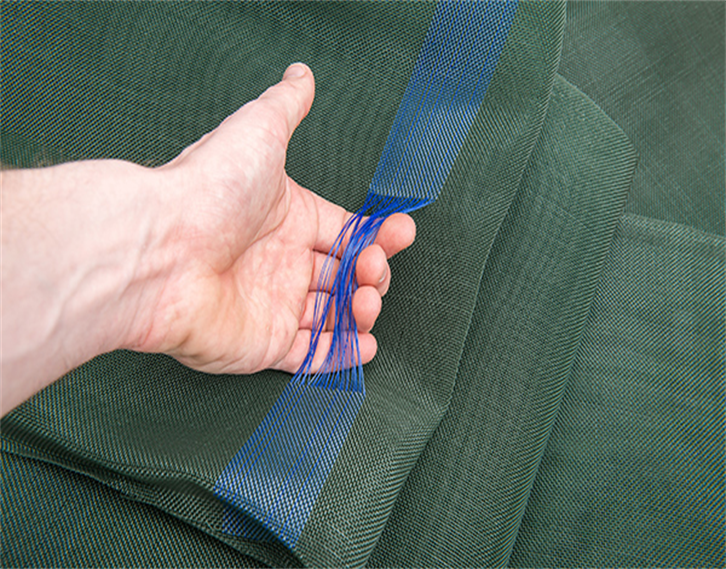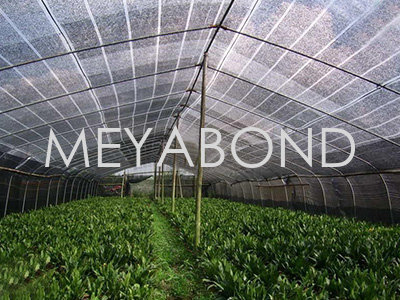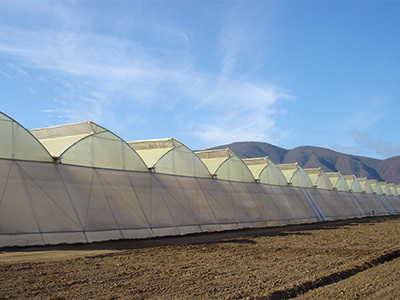Creating a Bird-Friendly Vineyard: Expert Tips on Wisely Implementing Bird Nets
Creating a Bird-Friendly Vineyard: Expert Tips on Wisely Implementing Bird Nets
Table of Contents
- 1. Introduction to Bird-Friendly Vineyards
- 2. The Importance of Bird Conservation in Vineyards
- 3. Understanding Bird Nets: Types and Uses
- 4. Choosing the Right Bird Nets for Your Vineyard
- 5. Installation Tips for Effective Bird Netting
- 6. Maintenance of Bird Nets: Keeping Your Vineyard Safe
- 7. Promoting Biodiversity: Encouraging Beneficial Birds
- 8. Frequently Asked Questions (FAQs)
- 9. Conclusion: A Sustainable Future for Vineyards
1. Introduction to Bird-Friendly Vineyards
In the world of viticulture, the delicate balance between protecting crops and conserving wildlife can be challenging. Creating a bird-friendly vineyard necessitates thoughtful strategies, particularly regarding the implementation of bird nets. A vineyard serves not only as a source of grapes for winemaking but also as a habitat for various bird species. By understanding how to use bird nets wisely, vineyard owners can ensure the safety of their crops while fostering a healthy ecosystem.
2. The Importance of Bird Conservation in Vineyards
Birds play a crucial role in maintaining the ecological balance within vineyards. They contribute to pest control, pollination, and seed dispersal, making them invaluable allies for vineyard health. However, birds can also pose a threat to grape production, leading vineyard managers to consider protective measures. By implementing bird-friendly practices, we can enhance biodiversity and create a thriving environment for both vines and wildlife.
2.1 The Role of Birds in Pest Control
Many bird species feed on insects that commonly plague vineyards, such as aphids and caterpillars. By attracting these beneficial birds, vineyard owners can reduce the reliance on chemical pesticides, promoting a healthier environment for both the plants and the surrounding ecosystem.
2.2 Promoting Pollination
Birds, particularly hummingbirds, contribute to the pollination of various plants. In vineyards, this can result in improved grape yield and quality. Encouraging a diverse bird population can foster a natural balance that benefits both the crops and the local fauna.
3. Understanding Bird Nets: Types and Uses
Bird nets are essential tools in protecting vineyards from feathered threats. Understanding the different types of bird nets available can help vineyard managers make informed decisions that align with their goals.
3.1 Types of Bird Nets
There are several types of bird nets, each serving a unique purpose. Here are some common options:
- **Standard Bird Nets**: These nets are designed to cover grapes and other crops, preventing birds from accessing the fruit.
- **Exclusion Nets**: Used primarily to keep birds out of certain areas, exclusion nets are ideal for protecting small plots or specific sections of a vineyard.
- **Customizable Nets**: Some vineyards may require tailored solutions, and customizable nets can be designed to fit unique shapes and sizes.
3.2 Key Features to Consider
When selecting bird nets, consider the following features:
- **Material**: Look for durable, UV-resistant materials that can withstand the elements.
- **Mesh Size**: Choose a mesh size that prevents birds from entering while allowing beneficial insects to pass through.
- **Weight**: Lightweight options are easier to install and remove, while heavier nets may provide more durability.
4. Choosing the Right Bird Nets for Your Vineyard
Selecting the appropriate bird net for your vineyard requires careful consideration of several factors, including vineyard size, grape variety, and specific challenges posed by local bird populations.
4.1 Assessing Your Vineyard's Needs
Before purchasing bird nets, conduct a thorough assessment of your vineyard. Identify areas that experience the most bird activity and the specific bird species that pose a threat. This information will help you determine the type and quantity of netting required.
4.2 Budget Considerations
Bird nets can vary significantly in price. It is essential to set a budget while considering the long-term benefits of investing in high-quality nets that will last multiple seasons.
5. Installation Tips for Effective Bird Netting
Proper installation of bird nets is crucial for maximizing their effectiveness. Here are some practical tips for ensuring a successful setup:
5.1 Timing Your Installation
Install bird nets before the birds begin to show interest in your crops. Timing is crucial—typically, this means installing nets as soon as the grapes begin to ripen. Early installation can prevent birds from developing habits of feeding on your grapes.
5.2 Securing the Nets
Ensure that you secure the nets tightly around the perimeter of the vineyard. Use stakes, weights, or other anchoring methods to prevent birds from finding gaps. Regularly check and adjust the nets to accommodate plant growth throughout the season.
5.3 Monitoring for Damage
Regularly inspect the netting for signs of wear and tear. Promptly repair or replace damaged sections to maintain effective protection for your grapes.
6. Maintenance of Bird Nets: Keeping Your Vineyard Safe
Bird net maintenance is essential for ensuring its longevity and effectiveness. Here are some key practices to keep in mind:
6.1 Seasonal Removal
At the end of the harvest season, carefully remove and store the bird nets. Clean them thoroughly to remove any debris, dirt, or pests that may have accumulated during the growing season. Proper storage will prolong the life of your nets.
6.2 Regular Inspections
Throughout the growing season, conduct frequent inspections of your nets. Look for signs of wear, tear, or any damage caused by weather conditions. Early detection can help prevent larger issues during critical periods.
6.3 Adaptation to New Threats
Stay informed about local bird populations and trends. If you notice a new species entering your vineyard, be prepared to adapt your netting strategy accordingly.
7. Promoting Biodiversity: Encouraging Beneficial Birds
While bird nets are essential for protecting grapes, it is equally important to attract beneficial bird species to your vineyard. Here are effective strategies to promote biodiversity:
7.1 Creating Habitat Structures
Planting native vegetation around your vineyard can provide shelter and food sources for beneficial birds. Consider adding shrubs, trees, and flowering plants that appeal to local bird species.
7.2 Providing Water Sources
Install birdbaths or small ponds near your vineyard to provide hydration for birds. This can attract beneficial species that help control pests.
7.3 Minimizing Chemical Use
Reducing or eliminating chemical pesticides not only benefits the environment but also attracts more birds to your vineyard. A healthy ecosystem will encourage birds to thrive and support crop productivity.
8. Frequently Asked Questions (FAQs)
8.1 What types of birds commonly invade vineyards?
Common birds that may pose threats to vineyards include starlings, sparrows, and crows. Understanding their behaviors can help in devising effective strategies for deterrence.
8.2 How can I identify the right time to install bird nets?
The best time to install bird nets is when grapes begin to ripen, typically a few weeks before harvest. Monitor local bird activity to determine peak feeding times.
8.3 Are there eco-friendly alternatives to traditional bird nets?
Yes, there are biodegradable bird netting options available that can serve as an eco-friendly alternative while still providing effective protection.
8.4 Can bird nets affect beneficial insects?
Well-designed bird nets allow beneficial insects to pass through while keeping birds out. Ensure that the mesh size is appropriate for this purpose.
8.5 How can I prevent birds from getting trapped in bird nets?
Regularly check your nets for damages and ensure they are securely fastened to minimize gaps. Additionally, you can use reflective materials or bird scare devices to deter birds from entering.
9. Conclusion: A Sustainable Future for Vineyards
Creating a bird-friendly vineyard is not just about protecting your crops; it is also about fostering a harmonious relationship between agriculture and nature. By implementing bird nets wisely and promoting biodiversity, vineyard owners can ensure a sustainable future that benefits both their harvests and the local ecosystem. With careful planning, attention to detail, and a commitment to environmental stewardship, we can cultivate vineyards that thrive in both productivity and ecological integrity.
Key words:
Related News
CONTACT US
Email: sales8@meyabond.com
Tel: +8618911966213
No.3 Yard, ZhongHe Road, 100071,FengTai District, Beijing, China
Email: sales8@meyabond.com
Tel: +8618911966213
No.3 Yard, ZhongHe Road, 100071,FengTai District, Beijing, China
















